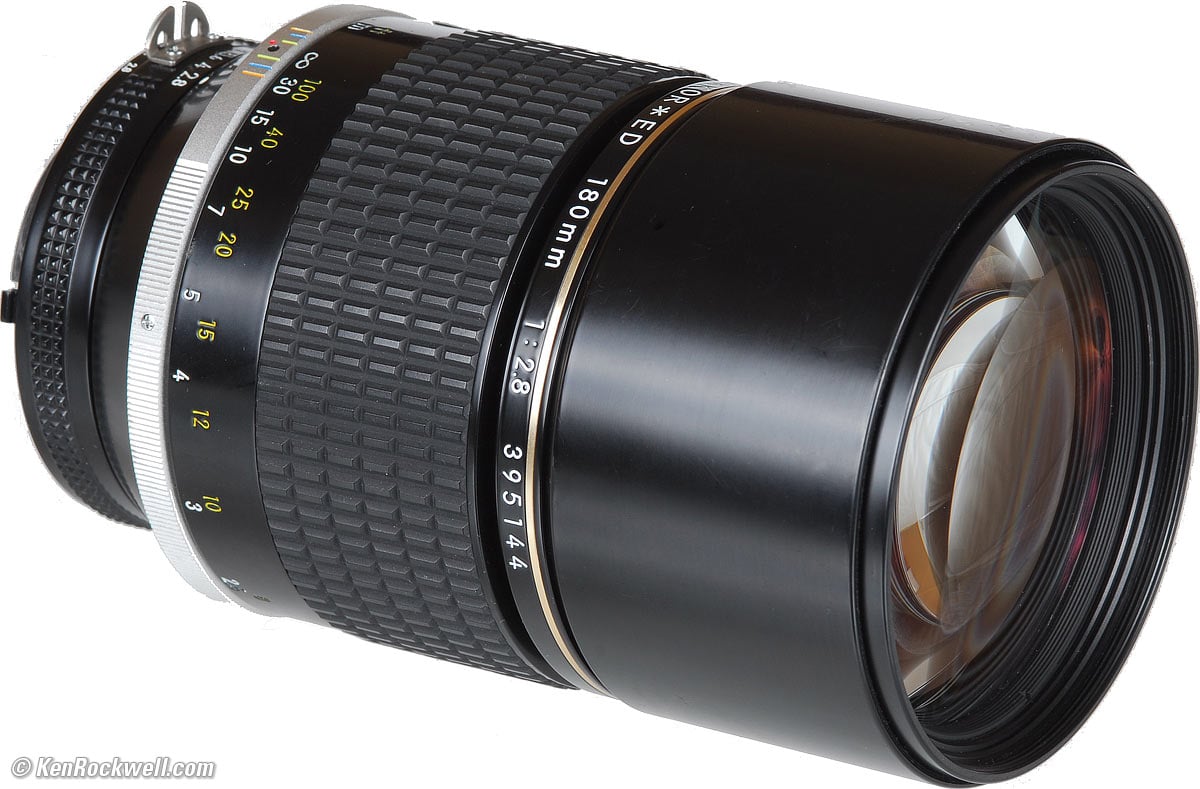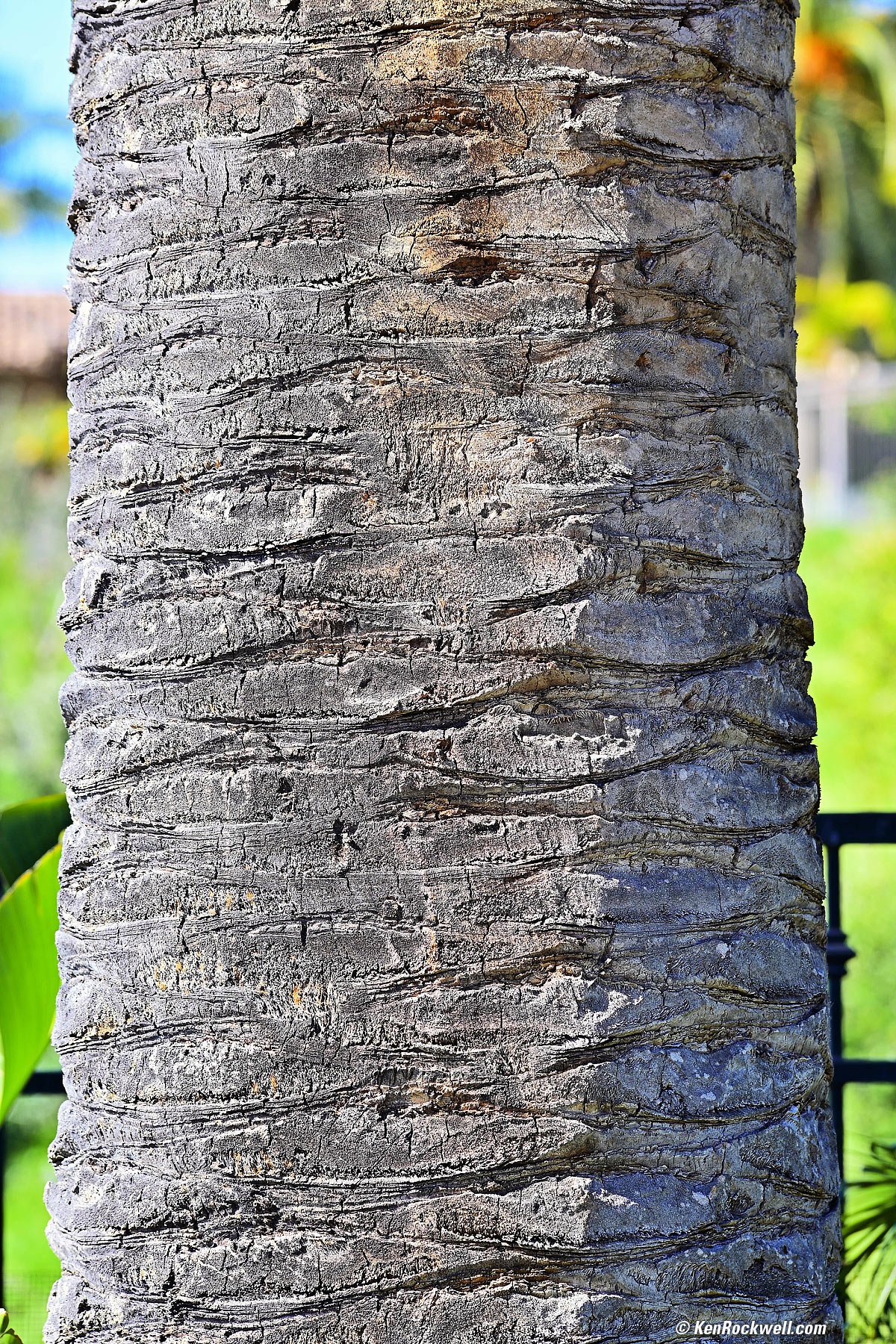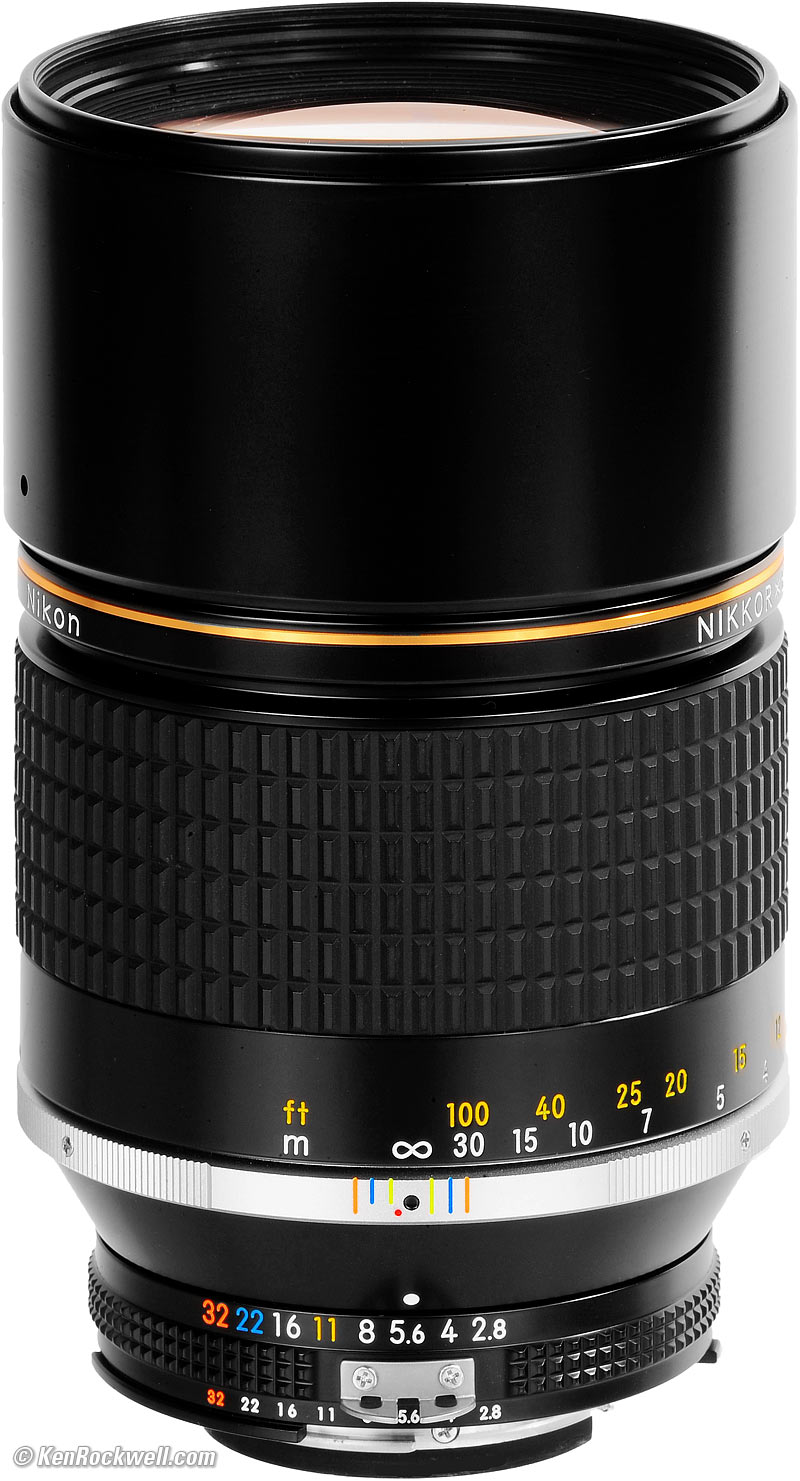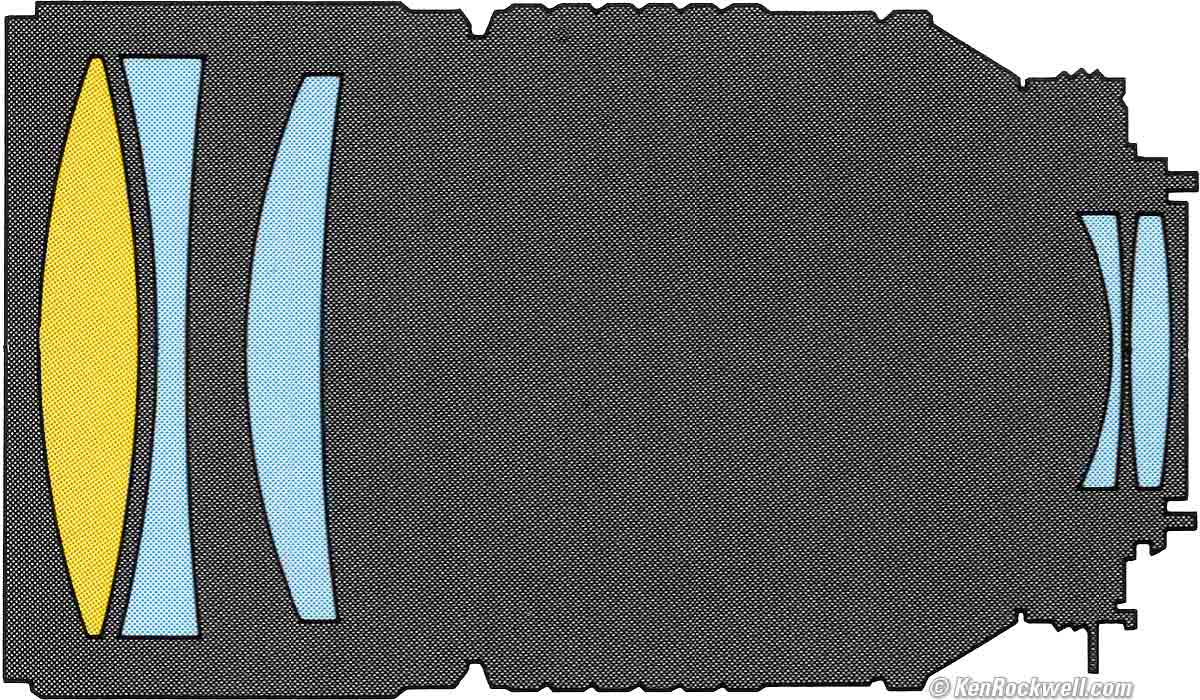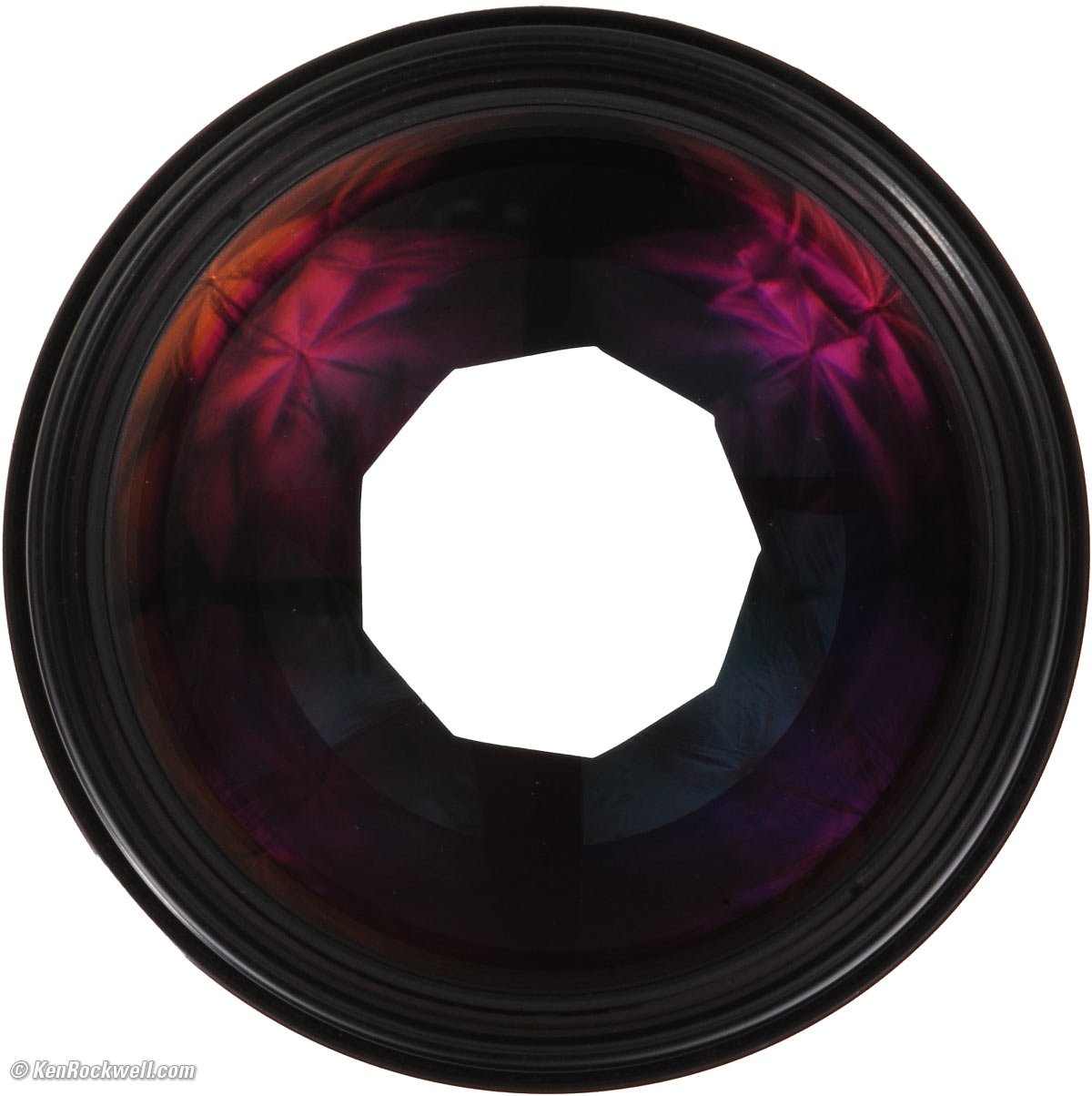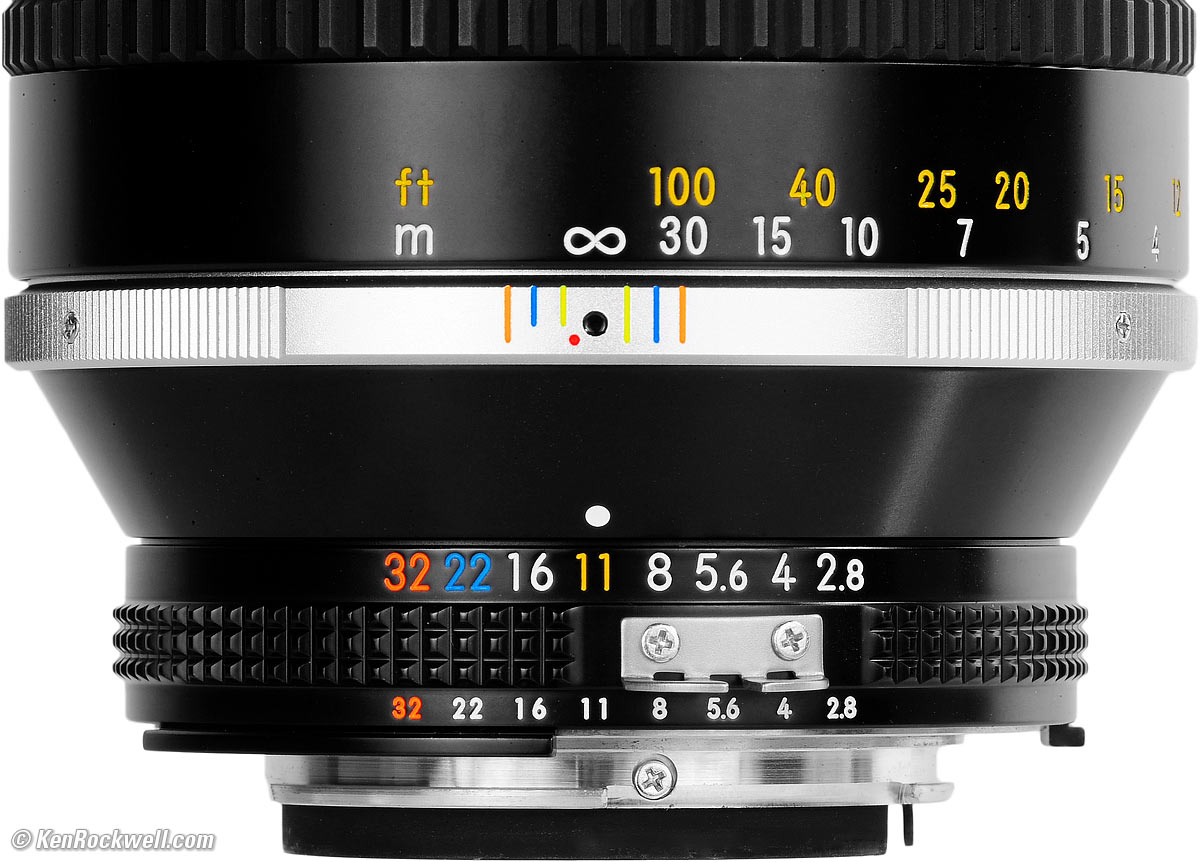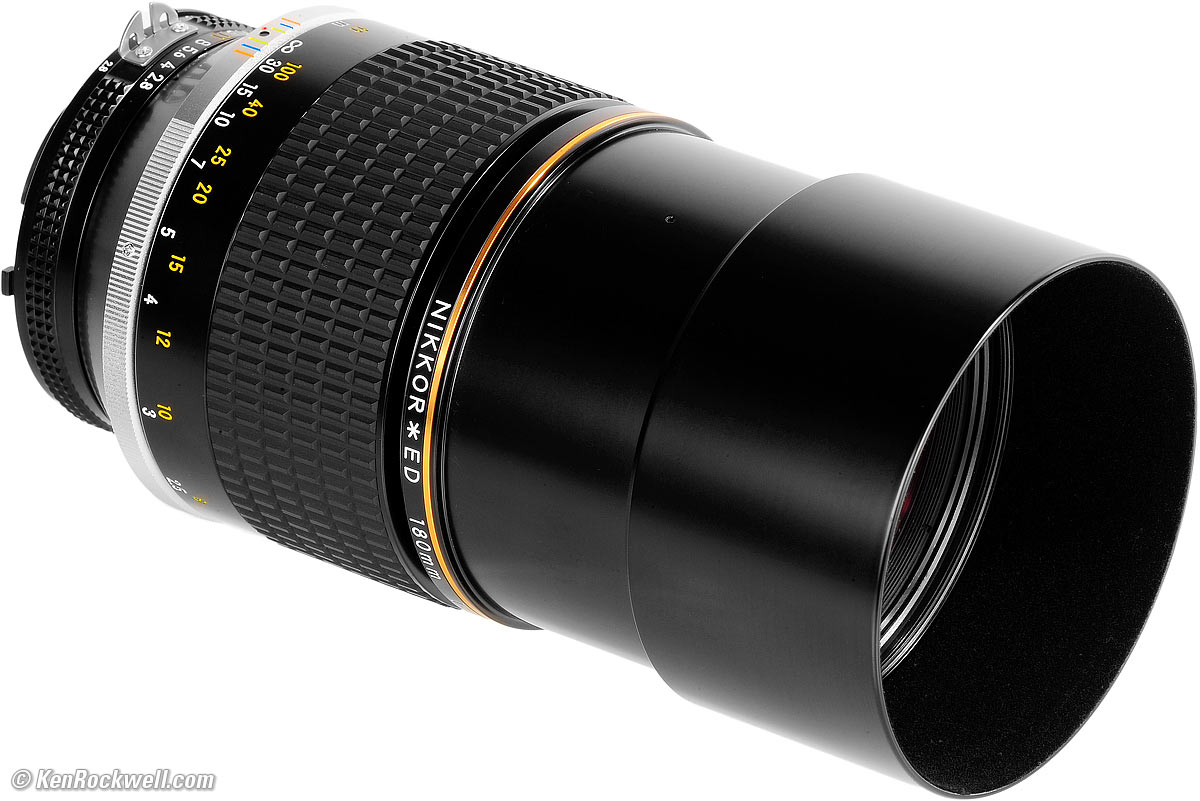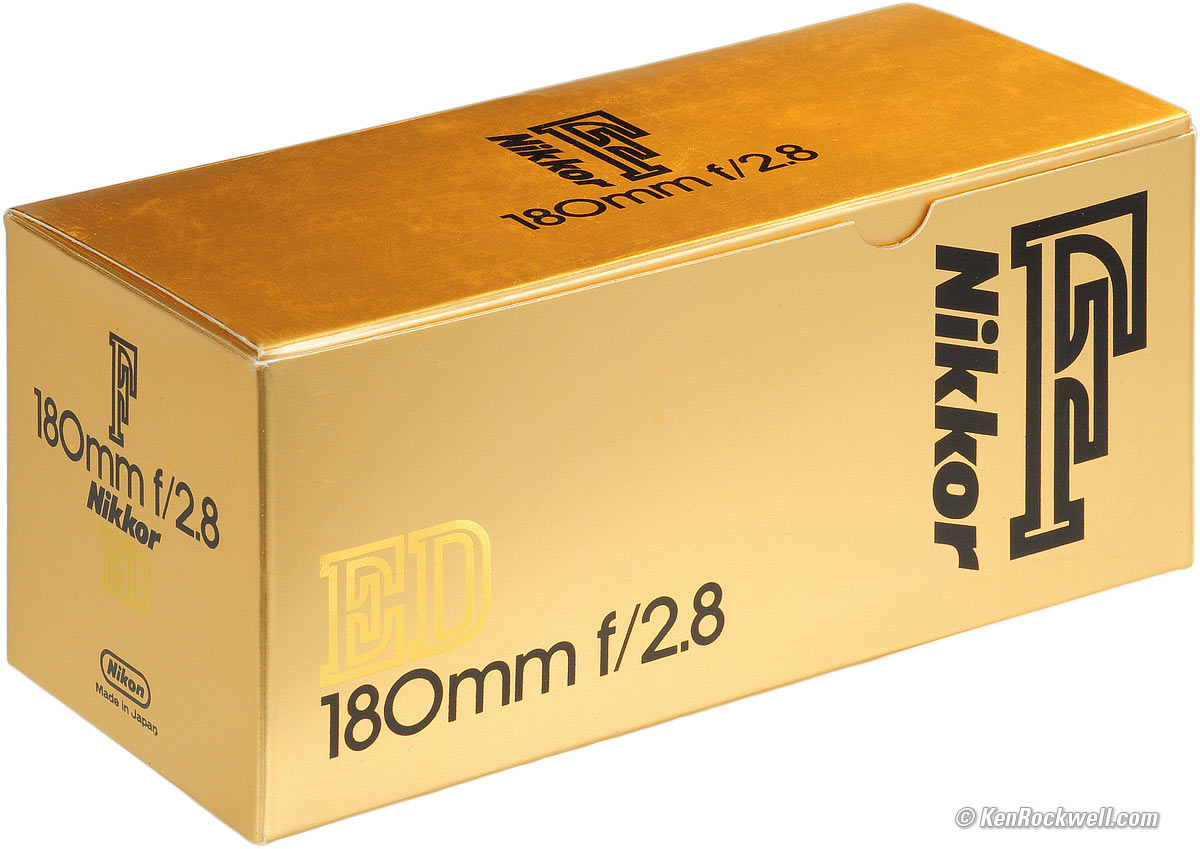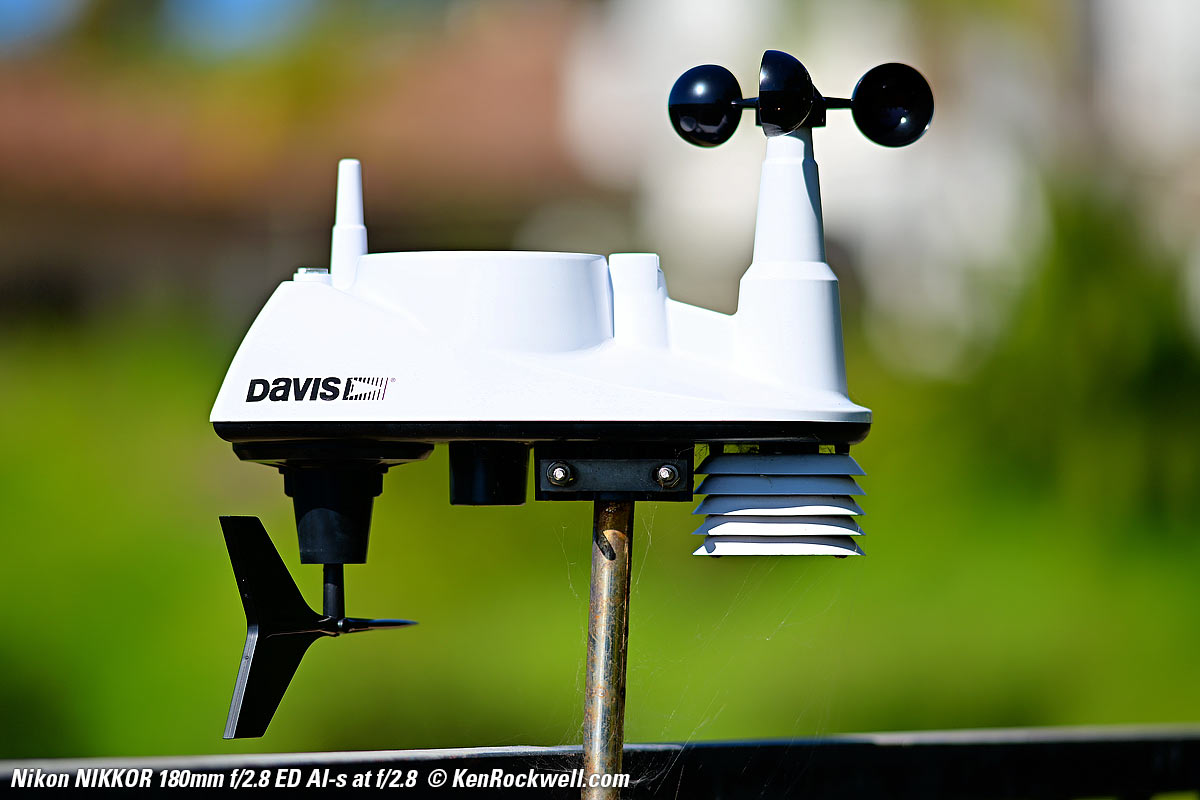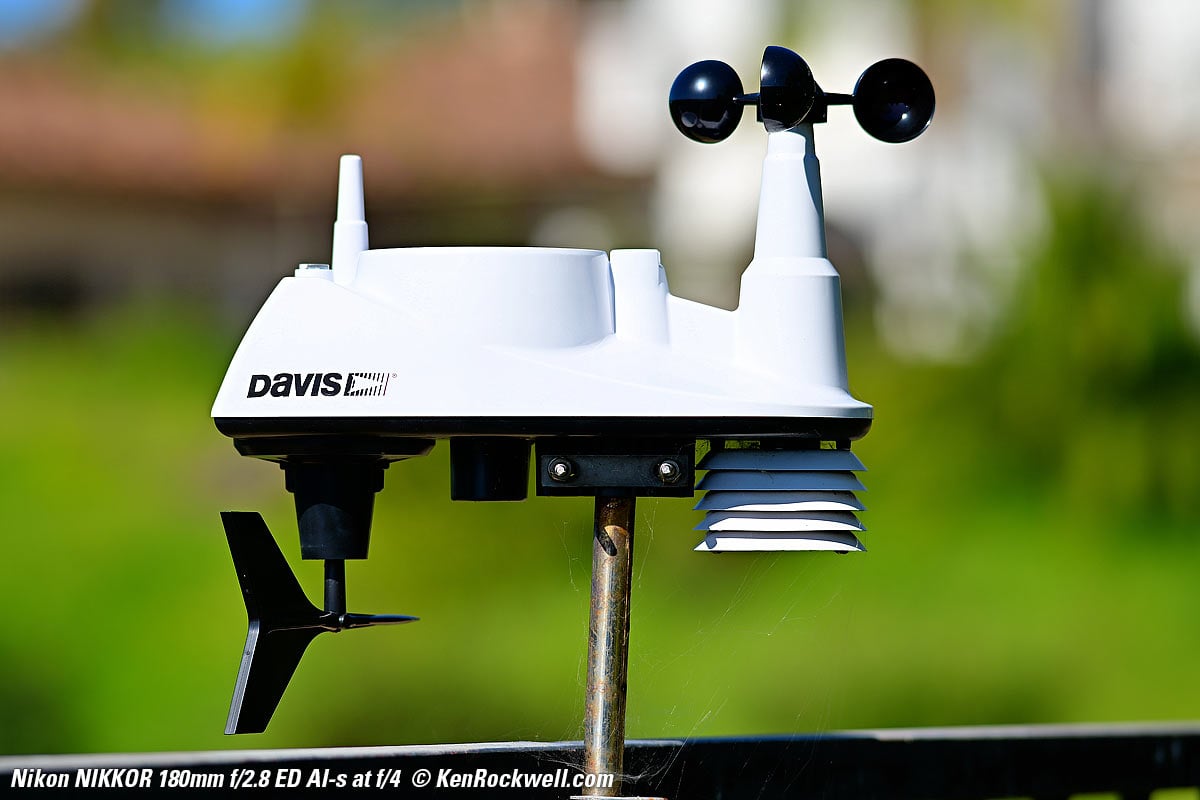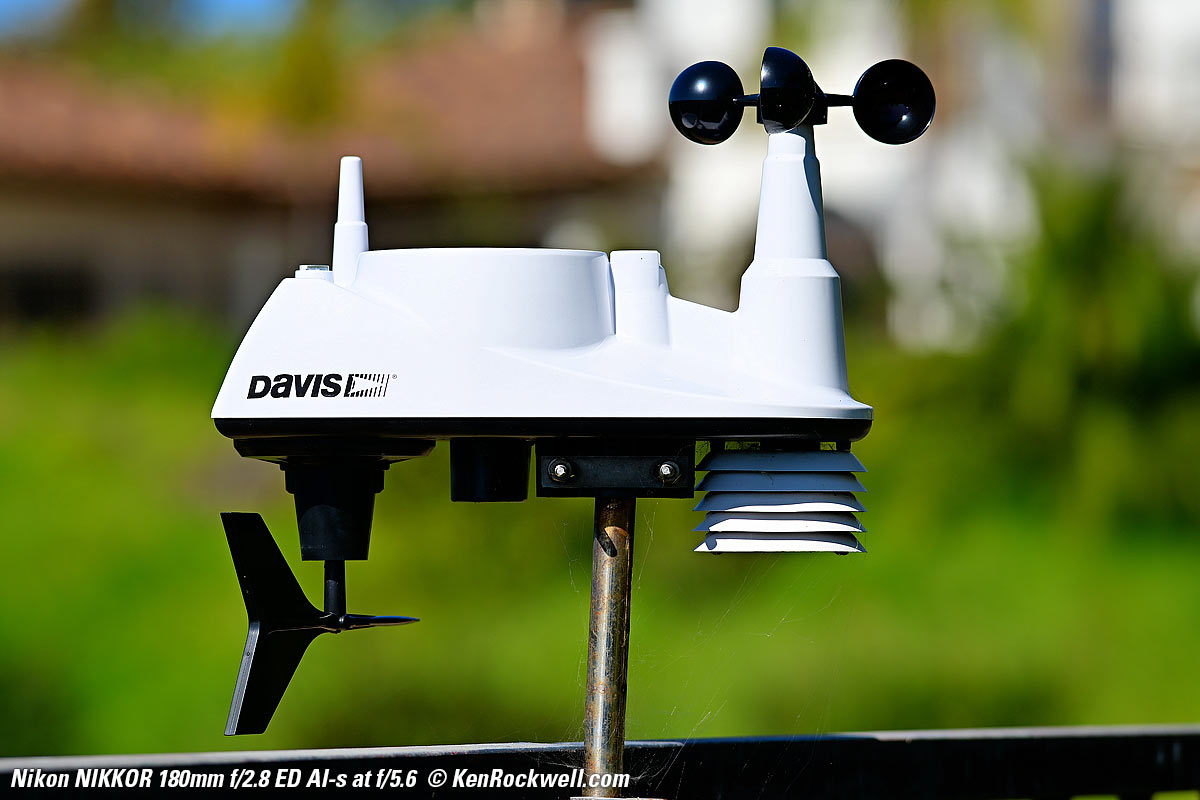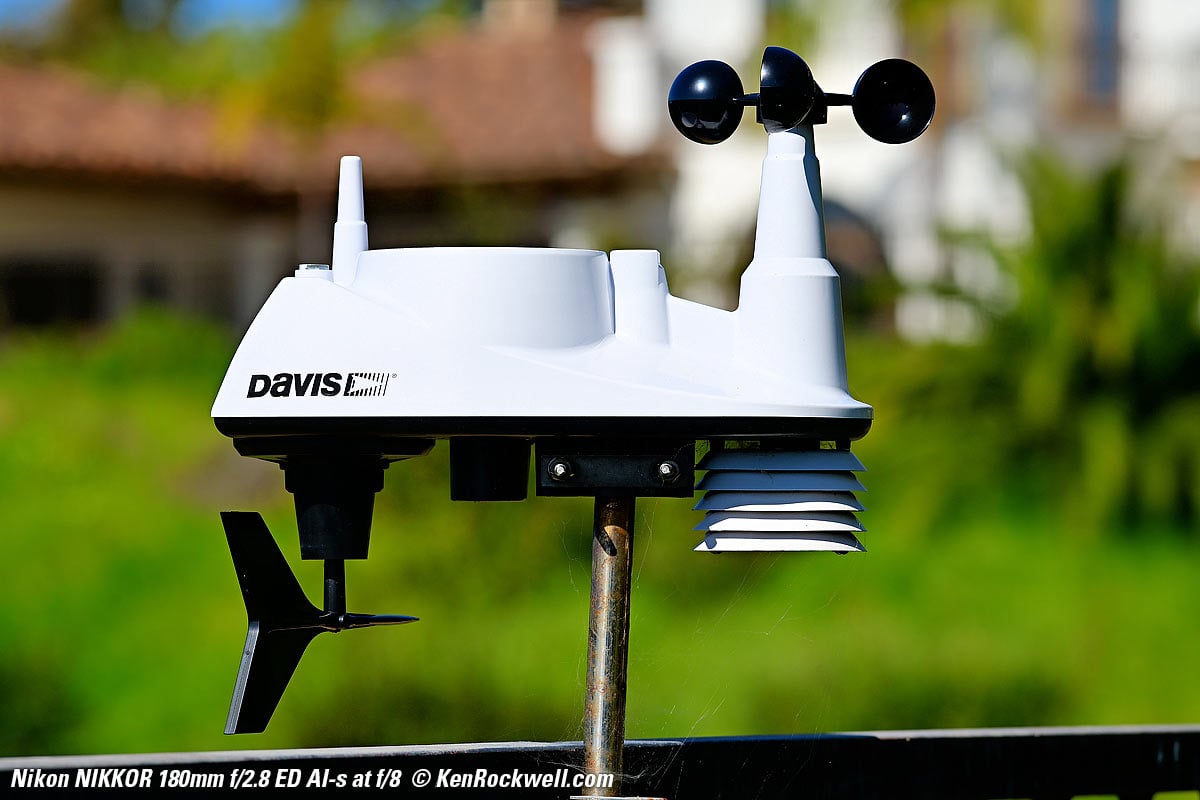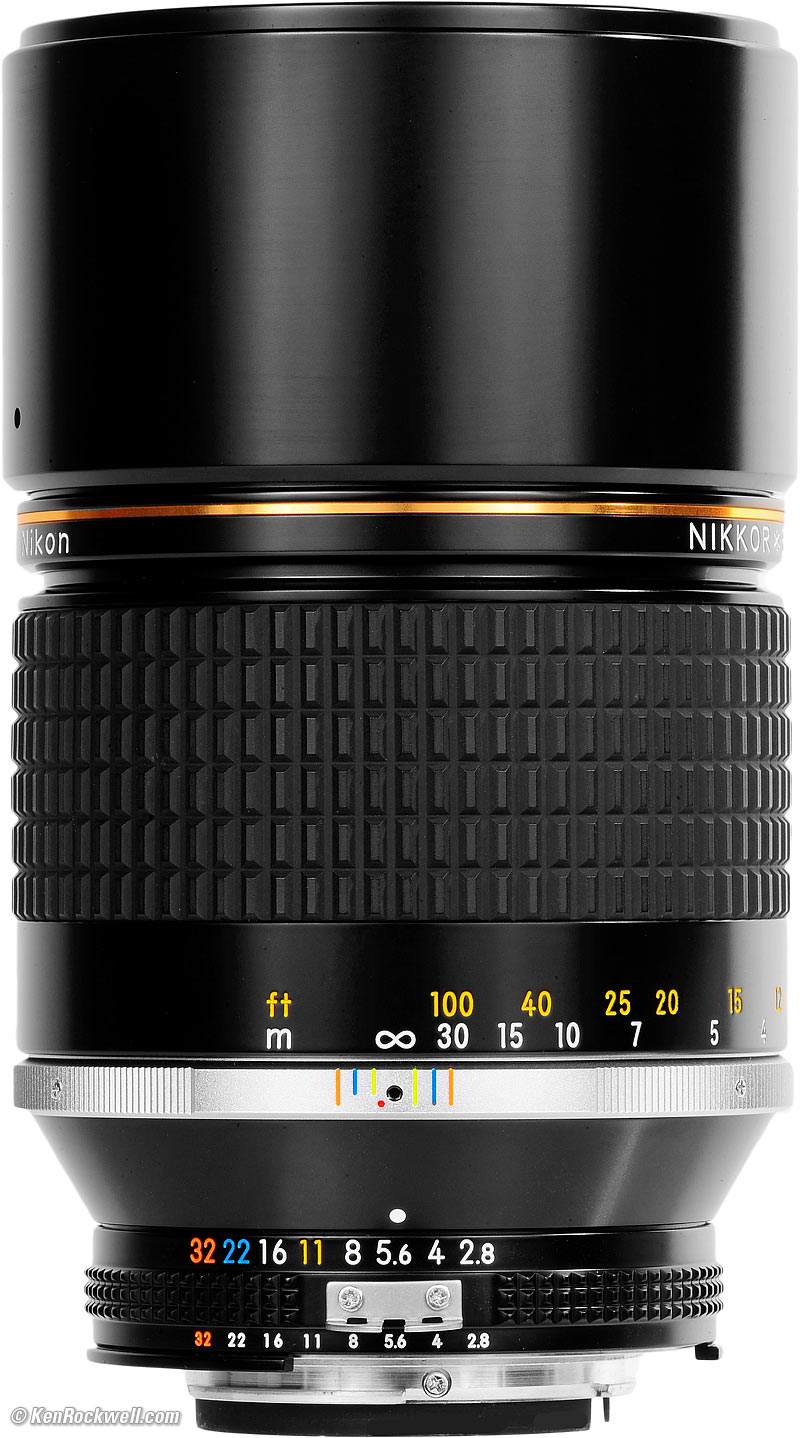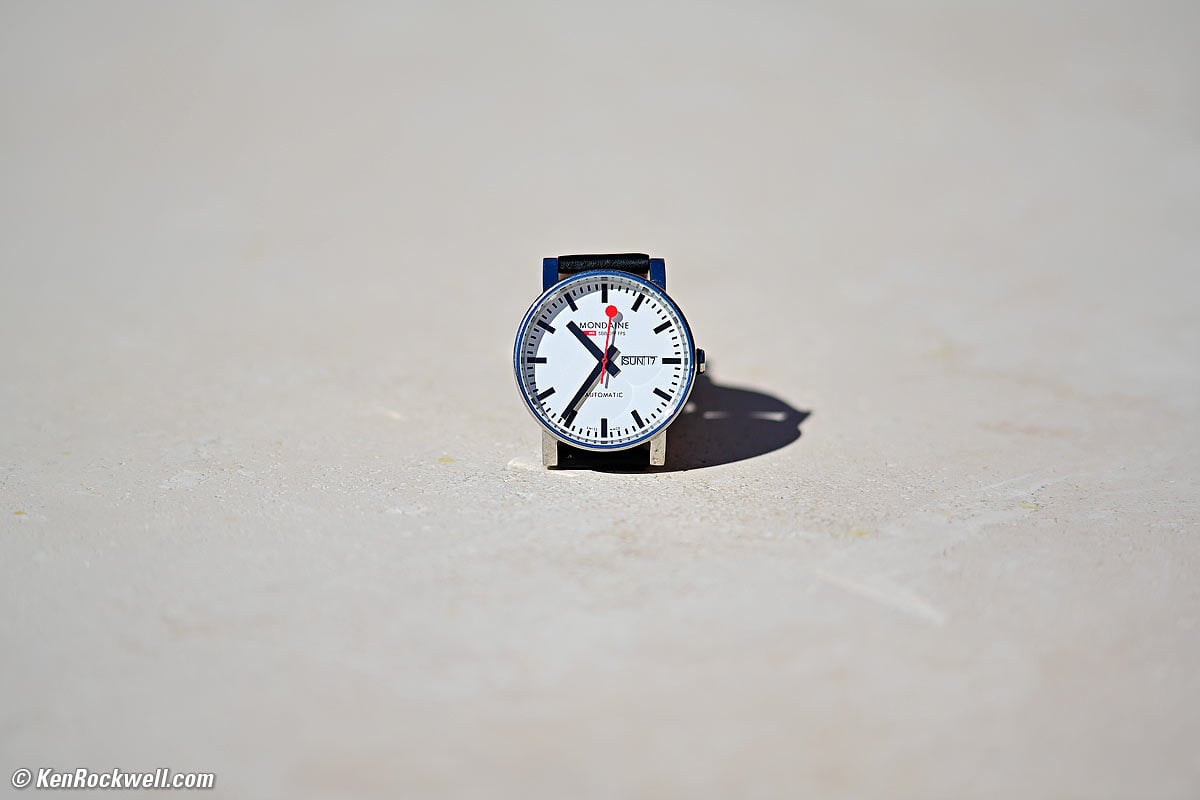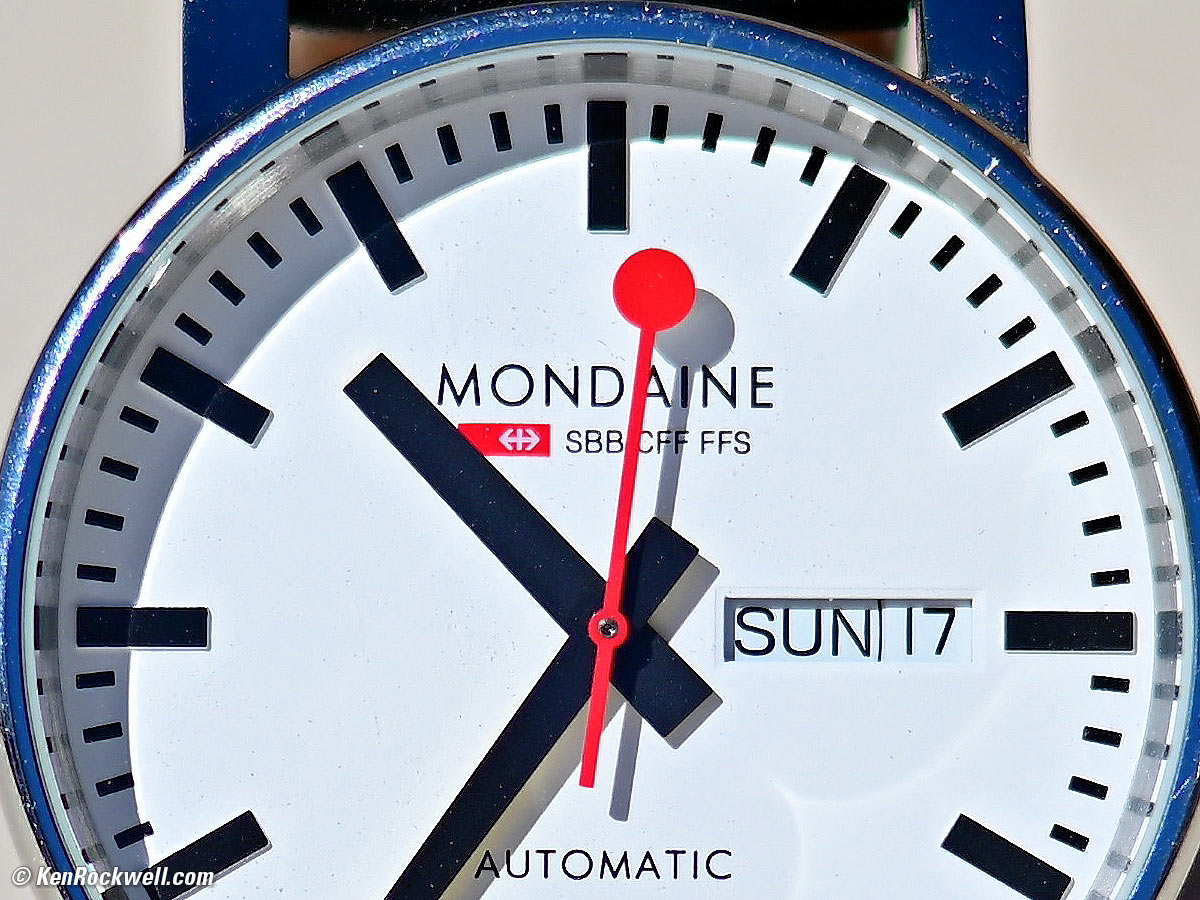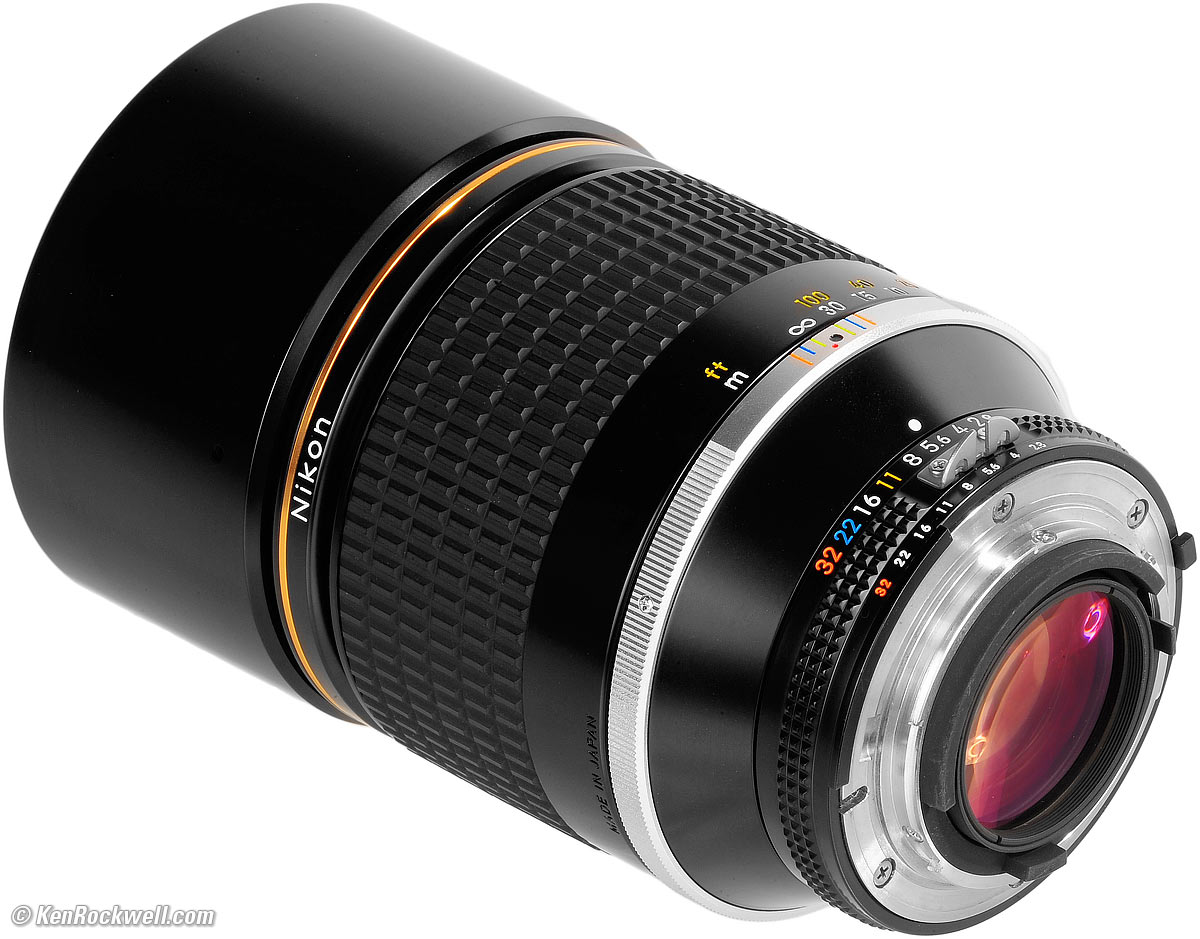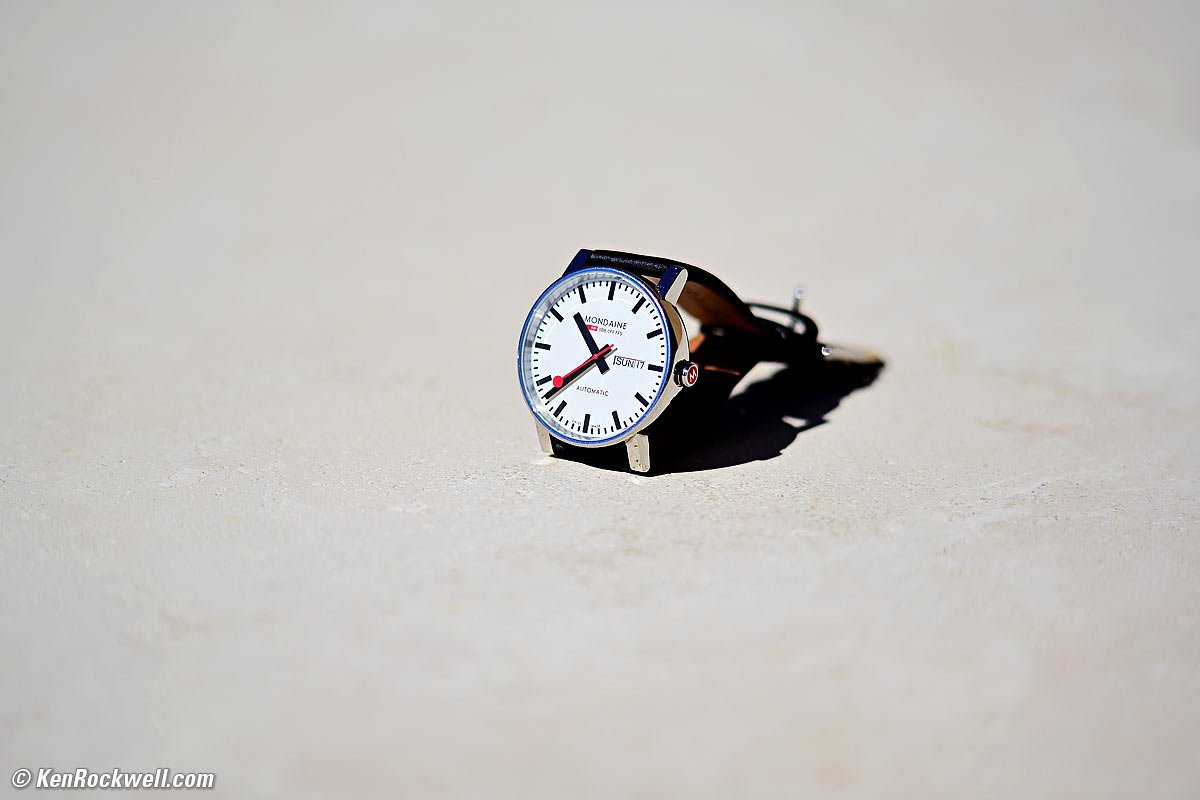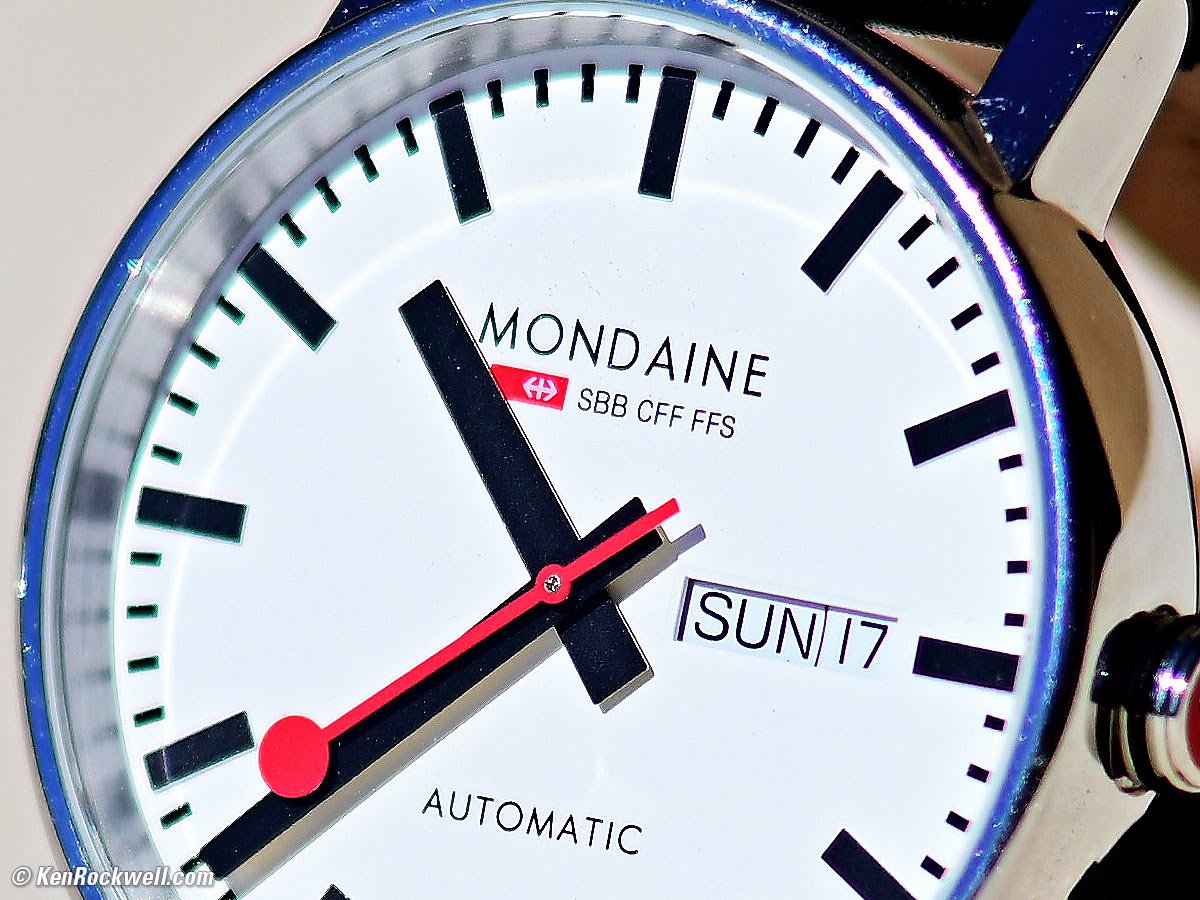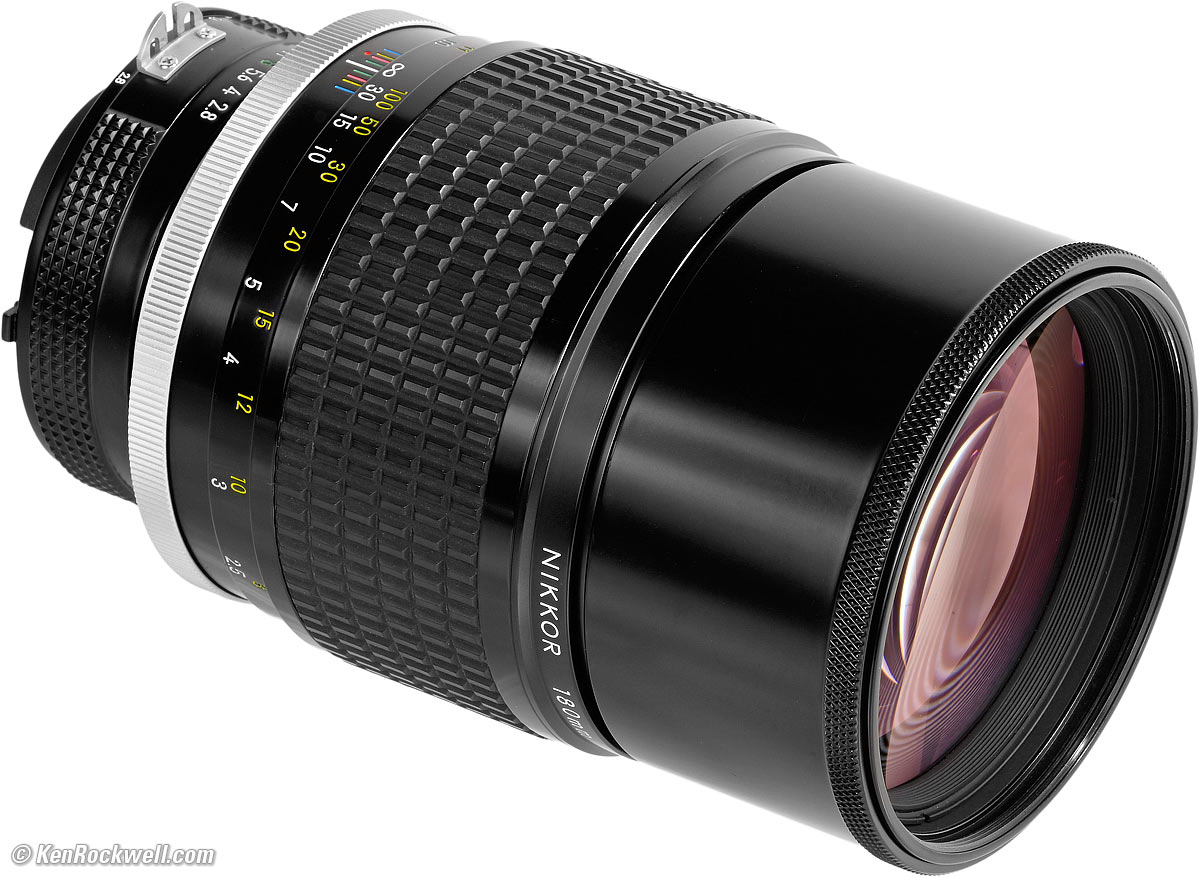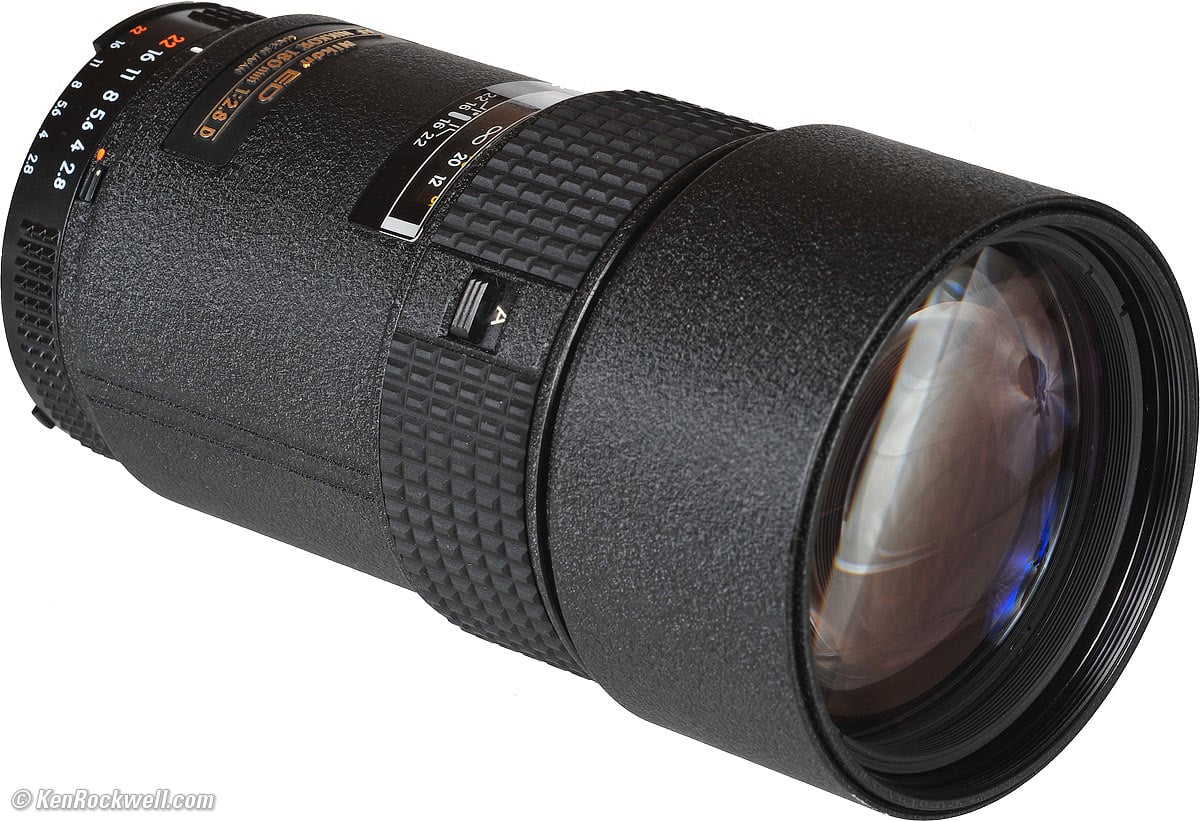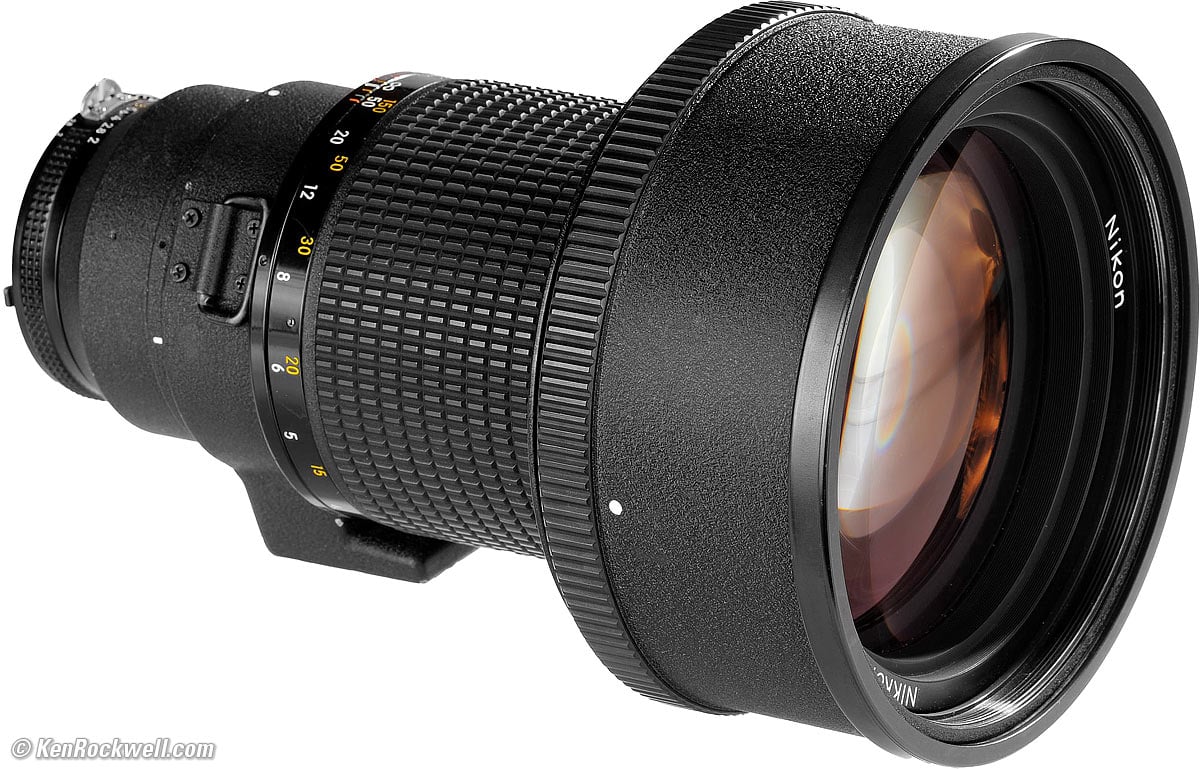Nikon 180mm f/2.8 ED AI-s
NIKKOR✱ED (1981-2005)
Sample Images Introduction Format
Compatibility Specifications Accessories
Performance Compared Recommendations
Nikon NIKKOR✱ED 180mm f/2.8 AI-s (FX, DX and 35mm coverage, 72mm metal filter thread, built-in hood, 28.0 oz./793g, 6'/1.8 m close focus, about $175~400 used depending on condition if you know How to Win at eBay). bigger.
My biggest source of support is when you use any of these links to approved sources, especially this link directly to them at eBay, when you get anything, regardless of the country in which you live. Thanks for helping me help you! Ken.
2:22 PM, 22 February 2022 Better Pictures Nikon Reviews Nikon Lenses Nikon Manual-Focus Lenses All Reviews
Why Fixed Lenses Take Better Pictures
Nikon 180mm versions and history
Sample Images
Top Sample Images Intro Format
Compatibility Specifications Accessories
Performance Compared Recommendations
These are all shot hand-held as BASIC ★ JPGs; no RAW files, NORMAL or FINE JPGs were used or needed.
Canary Palm Trunk, 9:33 AM, 17 March 2019. Nikon Z7, Nikon NIKKOR✱ED 180mm f/2.8 AI-s on FTZ adapter, f/8 at 1/50, Perfectly Clear. bigger, full-resolution file or camera-original © 45MP file.
The top of the trunk isn't in focus, that's not a lens defect.
Introduction
Top Sample Images Intro Format
Compatibility Specifications Accessories
Performance Compared Recommendations
|
I buy only from these approved sources. I can't vouch for ads below. |
This is the legendary NIKKOR✱ED 180mm f/2.8 AI-s, a superb manual focus lens often considered among Nikon's sharpest lenses of all time. It's ultra-sharp and works brilliantly on today's newest state-of-the-art 50 megapixel cameras.
It was introduced in 1981 to supersede the non-ED version. Its exotic ED extra-low dispersion glass reduces secondary chromatic aberration so its images are sharper and cleaner than the older non-ED 180, and offered what at the time was previously unseen performance in a very fast tele.
Today this is a superb lens for portraiture, nature, landscape, architecture and any other kind of precision photography.
If you've never shot with one of these masterpieces and only have shot with autofocus lenses, you're in for a treat. This lens is from back in the day when Nikon ruled the world of sports and news photography, and back when we still had real professional photographers who knew what pro gear felt like and demanded that it handle well and be built like a tank. Presuming you're using a nice sample like this one, it's a solid ingot of mechanical precision with optics to match, completely unlike the offshored plastic rubbish people accept today.
On DSLRs its fast f/2.8 aperture gives a much brighter viewfinder than the slower 28-300mm VR.
It is not an internal focusing (IF) lens. It focuses conventionally by moving the entire lens assembly in and out as you turn the focus ring.
While it was made until 2005 and sold overseas, Nikon USA stopped importing this manual-focus version to the USA by 1987 when they had introduced the 180/2.8 AF which they sold for more money. No worries, B&H Photo and Adorama imported gray-market versions you couldn't buy anywhere else.
See also Nikon 180mm f/2.8 History for perspective.
I love this lens. I bought my first 180/2.8 ED from B&H brand new in 1984, then two more from eBay, which is where I got this one. (How to Win at eBay).
Nikon NIKKOR✱ED 180mm f/2.8 AI-s. bigger.
New since the non-ED version (1970-1981)
 Adds ED extra-low dispersion glass for greatly reduced secondary chromatic aberration.
Adds ED extra-low dispersion glass for greatly reduced secondary chromatic aberration.
 Exquisite 9-blade diaphragm versus 7 blades.
Exquisite 9-blade diaphragm versus 7 blades.
 Lighter weight: 28.0 oz./793g versus 31.2 oz./885g.
Lighter weight: 28.0 oz./793g versus 31.2 oz./885g.
Good
 Superb optics.
Superb optics.
 Exquisite 9-blade diaphragm for round out-of-focus highlights and magnificent 18-point sunstars.
Exquisite 9-blade diaphragm for round out-of-focus highlights and magnificent 18-point sunstars.
 Stops down to f/32, which the newer autofocus 180mm and newest state-of-the-art 70-200mm f/2.8E FL can't do.
Stops down to f/32, which the newer autofocus 180mm and newest state-of-the-art 70-200mm f/2.8E FL can't do.
 Built-in hood.
Built-in hood.
 Magnificent straight 9-blade diaphragm for exquisite 18-pointed sunstars.
Magnificent straight 9-blade diaphragm for exquisite 18-pointed sunstars.
 Superlative mechanics: all metal, all engraved markings and no plastic.
Superlative mechanics: all metal, all engraved markings and no plastic.
 Heirloom-quality design and build to last beyond a lifetime.
Heirloom-quality design and build to last beyond a lifetime.
 Tubular velvet-lined Corinthian leather case and strap often included.
Tubular velvet-lined Corinthian leather case and strap often included.
 Made domestically in Japan.
Made domestically in Japan.
Bad
 Nothing; this lens is from Nikon's golden era when they ruled the sports and news photography world.
Nothing; this lens is from Nikon's golden era when they ruled the sports and news photography world.
Missing
 Nothing at the time; autofocus and Vibration Reduction hadn't been invented yet.
Nothing at the time; autofocus and Vibration Reduction hadn't been invented yet.
 No plastic.
No plastic.
 No printing; every marking is deeply engraved and filled with paint to last a few lifetimes.
No printing; every marking is deeply engraved and filled with paint to last a few lifetimes.
 Not off shored to some second- or third-world country for cheap labor as Nikon usually does today; this is a precision-made masterpiece.
Not off shored to some second- or third-world country for cheap labor as Nikon usually does today; this is a precision-made masterpiece.
Format
Top Sample Images Intro Format
Compatibility Specifications Accessories
Performance Compared Recommendations
I love this lens. I bought my first 180/2.8 ED from B&H brand new in 1984, then two more from eBay, which is where I got this one. (How to Win at eBay).
This is a full frame FX lens, and I'm reviewing it as such.
It works great on DX cameras, too, on which you may make the usual inferences.
Compatibility
Top Sample Images Intro Format
Compatibility Specifications Accessories
Performance Compared Recommendations
I love this lens. I bought my first 180/2.8 ED from B&H brand new in 1984, then two more from eBay, which is where I got this one. (How to Win at eBay).
This classic manual focus lens is one of Nikon's greatest of all time. It has no data communication when used on the FTZ so it has no autofocus and very limited usability; use it on an FX DSLR for the best experience (Nikon FX DSLRs have technology lacking in the FTZ for full communication with manual-focus lenses).
This manual-focus lens works great with most full-frame Nikon cameras made since 1977, both FX digital and 35mm. Of course it won't autofocus on any camera, but usually offers color matrix metering and aperture-preferred auto exposure if you like. It offers Aperture-priority, shutter-priority and full program auto exposure on the Nikon FA, and Matrix Metering on all FX cameras as well as the Nikon F4, Nikon FA and Nikon F6.
It also works great on better DX cameras, but won't meter with the cheapest DX cameras or cheaper autofocus 35mm cameras.
It works on the Z-series mirrorless cameras with the FTZ Adapter.
On all FX digital, Z-series mirrorless cameras, better DX cameras and the F6 be sure to set "180mm" and "f/2.8" at MENU > SETUP > NON-CPU LENS DATA.
See Nikon Lens Compatibility for details on your camera. Read down the "AI, AI-s"column.
Specifications
Top Sample Images Intro Format
Compatibility Specifications Accessories
Performance Compared Recommendations
I love this lens. I bought my first 180/2.8 ED from B&H brand new in 1984, then two more from eBay, which is where I got this one. (How to Win at eBay).
Name
Nikon calls this the Nikon NIKKOR✱ED 180mm f/2.8 AI-s.
NIKKOR: Nikon's brand name for all their lenses.
ED: Magic Extra-low Dispersion glass for reduced secondary chromatic aberration.
AI-s: Automatic (exposure meter) Indexing, with shutter-preferred optimized linear diaphragm actuation.
Optics
Nikon NIKKOR✱ED 180mm f/2.8 AI-s Internal Optical Construction. ED Glass and Glass elements. bigger.
5 elements in 5 groups.
One big ED extra-low dispersion element, which reduces secondary axial chromatic aberration.
Unit focusing, the whole lens moves in and out on big helicoids.
Nikon Super Integrated multicoating (SIC).
Filters
Solid aluminum alloy 72 mm filter thread.
Coverage
Diaphragm
Nikon NIKKOR✱ED 180mm f/2.8 AI-s at f/5.6. bigger.
9 straight blades.
Stops down to f/32 with full-stop clicks.
You may select any aperture anywhere between clicks.
Focal Length
180mm.
When used on DX cameras, it sees the same angle of view as a 270 mm lens sees when used on an FX or 35mm camera.
See also Crop Factor.
Angle of View
13º 40' diagonal on FX.
9º diagonal on DX.
Focus Scale
Yes, correctly color-coded in white for meters and in yellow for feet.
Infinity Focus Stop
No, focuses a little past infinity to allow for the effect of temperature on the special ED low-dispersion glass.
Depth of Field Scale
Nikon NIKKOR✱ED 180mm f/2.8 AI-s. bigger.
Yes, color-coded to the aperture values.
Infrared Focus Index
Yes: red dot in depth-of-field scale.
Infinity Focus Stop specifications top
Yes.
Close Focus
6 feet (1.8 meters).
190º focus ring rotation.
Maximum Reproduction Ratio
1:7.5 (0.13×).
Reproduction Ratio Scale
No.
Hood
Nikon NIKKOR✱ED 180mm f/2.8 AI-s. bigger.
Built-in telescoping fuzzy black-flocked metal tubular hood.
Hint: They always seem to get pushed back because they don't lock. Find a thick rubber band and put in on the barrel behind the hood and it will keep it extended.
Case
CL-35A Corinthian Leather tubular case, lined with Hungarian red velvet, and strap.
The case was included from 1987-1991, otherwise there was usually no free case included.
Size
3.09" ø maximum diameter × 5.12" extension from flange (5.43" overall).
78.5 mm ø maximum diameter × 130 mm extension from flange (138mm overall).
Weight
27.987 oz. (793.4 g), actual measured weight.
Rated 28.2 oz. (800 g).
Quality
Made in Japan.
Packaging
Nikon NIKKOR✱ED 180mm f/2.8 AI-s. bigger.
Gold foil cardboard box with lens in its case inside.
Hot-stamped 24 karat gold "ED" graphics.
Instruction sheet in box, outside of case.
The case was included from 1987-1991, otherwise there was usually no free case included.
Serial Number Range
380,000 (1981) to 454,000 (2005).
Price, USA
February 2022
If you know How to Win at eBay, typically sells used for about $200 ~ $300 in nice condition. Prices actually paid range from up to $400 unused in box with case and instructions to about $125 in well-worn, but working and unscratched condition. Sells for $100 or less if it's damaged.
May 2019
If you know How to Win at eBay, typically sells used for about $200 ~ $300 in nice condition. Prices actually paid range from up to $400 unused in box with case and instructions to about $125 in well-worn, but working and unscratched condition. Sells for $100 or less if it's damaged.
August 2012
$750 new or $500 used if you know How to Win at eBay.
December, 2000
$769.95 new (gray-market) at B&H Photo (that's $1,135 in 2019 dollars).
December, 1999
$799.95 new (gray-market) at B&H Photo (that's $1,220 in 2019 dollars).
December, 1998
$799.95 new (gray-market) at B&H Photo (that's $1,250 in 2019 dollars).
December, 1997
$849.95 new (gray-market) at B&H Photo (that's $1,345 in 2019 dollars).
December, 1995
$849.95 new at B&H Photo (that's $1,420 in 2019 dollars).
December, 1994
$799.95 new at B&H Photo (that's $1,370 in 2019 dollars).
December, 1992
$699.96 new at B&H Photo (that's $1,270 in 2019 dollars).
December, 1991
$569.95 new at B&H Photo (that's $1,065 in 2019 dollars).
December, 1988
$699.00 new at B&H Photo (that's $1,500 in 2019 dollars).
January, 1987
$529.00 new at B&H Photo (that's $1,180 in 2019 dollars).
June, 1986
$429.95 new at B&H Photo (that's $1,000 in 2019 dollars) and $439.95 new at Adorama (that's $1,020 in 2019 dollars)..
January, 1983
$359.00 new at B&H Photo (that's $915 in 2019 dollars).
March, 1982
$559.95 newly introduced at B&H Photo (that's $1,475 in 2019 dollars).
Optional Accessories
Top Sample Images Intro Format
Compatibility Specifications Accessories
Performance Compared Recommendations
I love this lens. I bought my first 180/2.8 ED from B&H brand new in 1984, then two more from eBay, which is where I got this one. (How to Win at eBay).
Teleconverters
Works with TC-1, TC-200, TC-201, TC-14A, TC-16 (only for the rare F3AF) and TC-16A autofocusing teleconverter.
The TC-2, TC-300, TC-301, TC-14, TC-14B and all of the TC-E converters won't fit because they need to poke into the back of a lens.
Nikon warns that at f/11 and smaller there can be uneven exposure at high shutter speeds.
Performance
Top Sample Images Intro Format
Compatibility Specifications Accessories
Performance Compared Recommendations
Color Rendition Distortion Ergonomics
Falloff Filters Flare & Ghosts
Lateral Color Fringes Macro Mechanics
Stabilization Sunstars Teleconverters
I love this lens. I bought my first 180/2.8 ED from B&H brand new in 1984, then two more from eBay, which is where I got this one. (How to Win at eBay).
Overall performance top
The 180/2.8 ED is a jewel, one of Nikon's greatest lenses of all time, with near-perfect optics and flawless mechanical quality.
Focus performance top
Manual focus is flawless.
The entire lens moves in and out on a big, precise brass and aluminum helicoid.
Just two fingertips or one firm fingertip is all it takes to focus this lens, even pointed straight up or down.
Focus is ultra smooth and only lightly damped. If yours is stiff, gritty or uneven, your lens is broken and needs service.
Focus Breathing performance top
Focus breathing is the image changing size as focused in and out. It's important to cinematographers that the image not breathe because it looks funny if the image changes size as focus gets pulled back and forth between actors. If the lens does this, the image "breathes" by growing and contracting slightly as the dialog goes back and forth.
As a unit-focus lens whose entire optical cell moves in and out together, the image from the 180/2.8 ED gets larger as focused more closely.
Bokeh performance top
Bokeh, the feel or quality of out-of-focus areas as opposed to how far out of focus they are, is excellent at f/2.8, becoming neutral at smaller apertures.
Here are photos from headshot distance:
f/2.8 on Full-Frame
Davis 6250 weather station, 17 March 2019. bigger or Nikon Z7-original © 45MP file.
f/4 on Full-Frame
Davis 6250 weather station, 17 March 2019. bigger or Nikon Z7-original © 45MP file.
f/5.6 on Full-Frame
Davis 6250 weather station, 17 March 2019. bigger or Nikon Z7-original © 45MP file.
f/8 on Full-Frame
Davis 6250 weather station, 17 March 2019. bigger or Nikon Z7-original © 45MP file.
As always, if you want to throw the background as far out of focus as possible, shoot at f/2.8 and get as close as possible.
Color Rendition performance top
Color rendition is neutral, matching my other multicoated NIKKOR lenses from the 1970s through today.
Distortion performance top
The Nikon 180mm f/2.8 ED has no visible distortion at any distance.
For critical scientific use you can correct it even further with these factors in Photoshop's lens correction filter.
These aren't facts or specifications, they are the results of my research that requires hours of photography and calculations on the resulting data.
∞ |
-0.50 |
30' (10m) |
-0.40 |
10' (3m) |
-0.50 |
© 2019 KenRockwell.com. All rights reserved.
Ergonomics performance top
Nikon NIKKOR✱ED 180mm f/2.8 AI-s. bigger. |
Nikon NIKKOR✱ED 180mm f/2.8 AI-s. bigger. |
Most of the lens is the big, beautiful focus ring, covered in Nikon's signature flat-topped pyramidal "iron block" rubbery grip material. Unlike the crappy imitation rubber Nikon has used since around year 2000 on autofocus lenses that gets sticky after about 12 years, this rubber stays just like new forever.
Just two fingertips or one firm fingertip is all it takes to focus this lens, even pointed straight up or down.
The silver ring is the mounting grip. Grab this to mount and unmount the lens. It's easy to see or feel in any light.
The solid cast-alloy aperture ring is easy to set with a single fingertip. It's easy to set to any intermediate aperture, and has full-stop clicks. Pros set their apertures by feel, counting clicks up or down from f/32 or f/2.8.
My only whine is that the hood has no lock, and keeps getting pushed-in with use.
Falloff performance top
Falloff on FX and 35mm is minor at f/2.8, and goes away by f/4.
It won't be an issue at all on DX (see crop factor).
I've greatly exaggerated the falloff by shooting a gray field and placing these on a gray background; it will not look this bad in actual photos of real things:
180mm f/2.8 ED falloff on FX and 35mm at infinity.
© 2019 KenRockwell.com. All rights reserved. |
Filters, use with performance top
There's no need for thin filters. I can stack at least four regular filters and still not get any vignetting on full-frame.
Go ahead and use your standard rotating polarizer and grad filters.
Flare & Ghosts performance top
This lens uses a simple optical formula and has no problem with flare or ghosts.
Lateral Color Fringes performance top
There are no lateral color fringes as shot on Nikon cameras, which by default correct for any that may be there.
There is some minor spherochromatism, which can cause color fringes on things that aren't in perfect focus. Spherochromatism is a completely different aberration in a different dimension than lateral color fringes.
Macro Performance performance top
It doesn't get very close, but it remains ultra-sharp even at f/2.8:
Mondaine A132.30348.11SBB at close-focus distance at f/2.8, 17 March 2019. bigger or Nikon Z7-original © 45MP file.
1,200 × 900 pixel crop from above. bigger or Nikon Z7-original © 45MP file.
The dirt specks you're seeing are on the watch face and crystal.
If this 1,200 × 900 pixel crop is about 3" (7.5cm) wide on your screen, the complete image would print at a large 14″ × 21″ (35 × 55 cm) at this same high magnification.
If this 1,200 × 900 pixel crop is about 6" (15cm) wide on your screen, the complete image would print at a huge 27½″ × 41¼″ (70 × 105 cm) at this same high magnification.
If this 1,200 × 900 pixel crop is about 12" (30cm) wide on your screen, the complete image would print at a mammoth 55 × 82½″ (1.4 × 2.1 meters) at this same extremely high magnification!
Mechanical Quality performance top
Nikon NIKKOR✱ED 180mm f/2.8 AI-s. bigger.
This is one of Nikon's finest lenses of all time. It is made to even better standards than LEICA's lenses because Nikon uses even longer-life lubricants good for about 40-50 years and that don't cloud the glass, rather than the 15- to 20- years over which LEICA's lubricants work and thereafter cloud the glass.
Finish
Semi-matte black enamel over black-anodized aluminum.
Hood
Solid alloy.
Flocked interior.
Non-locking.
Front Bumper
None.
Filter Threads
Solid alloy.
Gold ED Band
Solid 14 karat gold.
That's the gold ring around the front of the lens.
Barrels
Metal.
Focus Ring
Rubber-covered solid alloy.
Rear Barrel
Metal.
Identity
Engraved into the very living metal and filled with paint around the barrel just ahead of the focus ring.
Internals
All metal!
Dust Gasket at Mount
No.
Mount
Dull chromed metal.
Markings
All engraved and filled with paint.
Serial Number
Engraved and filled with paint around front of barrel.
Date Code
None found, use your algebra and your serial number from 380,000 (1981 March) to 454,000 (2005 December).
Noises When Shaken
Mild clicking.
Made in
Japan.
Sharpness performance top
Lens sharpness has nothing to do with picture sharpness; every lens made in the past 100 years is more than sharp enough to make super-sharp pictures if you know what you're doing. The only limitation to picture sharpness is your skill as a photographer. It's the least talented who spend the most time worrying about lens sharpness and blame crummy pictures on their equipment rather than themselves. Skilled photographers make great images with whatever camera is in their hands; I've made some of my best images of all time with an irreparably broken camera! Most pixels are thrown away before you see them, but camera makers don't want you to know that.
If you're not getting ultra-sharp pictures with this, be sure not to shoot at f/11 or smaller where all lenses are softer due to diffraction, always shoot at ISO 100 or less because cameras become softer at ISO 200 and above, avoid shooting across long distances over land which can lead to atmospheric heat shimmer, be sure everything is in perfect focus, set your camera's sharpening as you want it (I set mine to the maximum) and be sure nothing is moving, either camera or subject. If you want to ensure a soft image with any lens, shoot at f/32 at ISO 1,600 at default sharpening in daylight through heat shimmer of rapidly moving subjects at differing distances in the same image.
These cautions aside, this is an ultrasharp lens from corner-to-corner even wide-open at f/2.8. Of course diffraction softens all lenses at f/16, f/22 and especially f/32, but otherwise you'll see more atmospheric heat shimmer in your outdoor photos than you'll see any lack of sharpness, even on Nikon's newest state-of-the-art 50MP cameras.
Be sure you're in perfect focus, as even the slightest lack of perfect focus may lead to you seeing green or magenta color fringes caused by spherochromatism. If you see these, try refocusing with magnified live view, or stop down a little and spherochromatism goes away.
Image Stabilization (VR) performance top
This lens has no internal optical stabilization, however it works with internal sensor-shift Image Stabilization (IS or VR (Vibration Reduction)) in some of Nikon's mirrorless Z cameras with the FTZ adapter.
"Percent Perfectly Sharp Shots" are the percentage of frames with 100% perfect tripod-equivalent sharpness I get when I'm shooting hand-held while free-standing with no support or bracing. This is a very strict test; in actual shooting at typical print sizes I get acceptable sharpness at much slower speeds, but for the purposes of seeing how much improvement an IS system gives, this is the most precise method.
Hand tremor is a random occurrence, so at marginal speeds some frames will be perfectly sharp while others will be in various stages of blur — all at the same shutter speed. This rates what percentage of shots are perfectly sharp, not how sharp are all the frames:
| % Perfectly Sharp Shots | 1/2 |
1/4 |
1/8 |
1/15 |
1/30 |
1/60 |
1/125 |
1/250 |
1/500 |
| Stabilization ON | 0 |
0 |
15 |
33 |
100 |
100 |
100 |
100 |
100 |
| Stabilization OFF | 0 |
0 |
0 |
0 |
0 |
0 |
33 |
0 |
100 |
I see about a four stop real-world improvement, whchis superb.
Spherochromatism performance top
Spherochromatism, also called "color bokeh" by laymen, is an advanced form of chromatic aberration in a different dimension than lateral color. It can cause colored fringes on out-of-focus highlights, usually seen as green fringes on backgrounds and magenta fringes on foregrounds. Spherochromatism is common in fast lenses of moderate focal length when shooting contrasty items at full aperture. It goes away as stopped down.
The NIKKOR ED 180mm f/2.8 has much less spherochromatism than the older non-ED 180/2.8 (the whole point of the new ED glass is to reduce spherochromatism and other chromatic aberrations), but this ED lens still has a little, as expected for fast telephoto lenses:
Mondaine A132.30348.11SBB at close-focus distance at f/2.8, 17 March 2019. bigger or Nikon Z7-original © 45MP file.
1,200 × 900 pixel crop from above. bigger or Nikon Z7-original © 45MP file.
If this 1,200 × 900 pixel crop is about 3" (7.5cm) wide on your screen, the complete image would print at a large 14″ × 21″ (35 × 55 cm) at this same high magnification.
If this 1,200 × 900 pixel crop is about 6" (15cm) wide on your screen, the complete image would print at a huge 27½″ × 41¼″ (70 × 105 cm) at this same high magnification.
If this 1,200 × 900 pixel crop is about 12" (30cm) wide on your screen, the complete image would print at a mammoth 55 × 82½″ (1.4 × 2.1 meters) at this same extremely high magnification!
Sunstars performance top
The 180/2.8 ED's magnificent 9-bladed diaphragm makes exquisite 18-pointed sunstars on brilliant points of light at almost all apertures.
Teleconverters performance top
As a fast telephoto, the 180/2.8 works very well with most teleconverters that fit, which are the TC-1, TC-200, TC-201, TC-14A, TC-16 (only for the rare F3AF) and TC-16A autofocusing teleconverter.
The TC-2, TC-300, TC-301, TC-14, TC-14B and all of the TC-E converters won't fit because they need to poke into the back of a lens.
Nikon warns that at f/11 and smaller there can be uneven exposure at high shutter speeds.
The TC-200, TC-201 and TC-14A are the most common.
I used to use my 180/2.8 all the time with my TC-14A, which turns this into a 250mm f/4 that's very sharp.
Compared
Top Sample Images Intro Format
Compatibility Specifications Accessories
Performance Compared Recommendations
I love this lens. I bought my first 180/2.8 ED from B&H brand new in 1984, then two more from eBay, which is where I got this one. (How to Win at eBay).
See also Nikon 180mm versions and history.
Versus the older 180mm f/2.8 non-ED (1970-1981)
Nikon 180mm f/2.8 AI (1977-1981).
The older non-ED lens weighs more (31.2 oz./885g. versus 28.0 oz./793g), has only a 7-blade diaphragm versus the 9 blades of the ED, and of course adds ED extra-low dispersion glass for greatly reduced secondary chromatic aberration.
Optically it makes about the same images at reasonable print sizes, but if you look at your digital images at 200% and shoot at f/2.8 you'll see much more green-magenta chromatic aberration in this lens versus the ED version.
Versus the 180mm f/2.8 AF (1986-present)
The newer autofocus 180mm f/2.8 has equally excellent but different optics and the same superb 9-bladed diaphragm, and adds autofocus at a higher price with slightly lower build quality and less weight.
The AF version will not autofocus on the FTZ adapter, but it does offer better EXIF data communication and automatic aperture control.
Since you'll have to focus the AF lens manually on an FTZ, you may as well use this manual-focus lens which has much better manual focus feel and precision than the AF lens does. The AF lens manually focuses faster with less focus ring rotation.
The AF lens only stops down to f/22, while the manual-focus versions stop down to f/32.
Versus the NIKKOR✱ED 200mm f/2 AI-s
Nikon NIKKOR✱ED 200mm f/2 AI-s.
The 200/2 has superior amazing bokeh, but isn't as sharp at f/2.8 or other apertures if you're counting pixels. The 200/2 also weighs and costs much, much more.
The choice is simple; if you want the highest sharpness stick with this 180mm f/2.8, but if you need insanely great bokeh, look at the 200mm f/2 AI-s.
Versus Zooms
This 180/2.8 is smaller than any f/2.8 zoom which covers 180mm. That's why Nikon still sells the autofocus version.
Recommendations
Top Sample Images Intro Format
Compatibility Specifications Accessories
Performance Compared Recommendations
I love this lens. I bought my first 180/2.8 ED from B&H brand new in 1984, then two more from eBay, which is where I got this one. (How to Win at eBay).
Use the autofocus version on AF 35mm SLRs and DSLRs. Use this manual focus lens on manual focus 35mm cameras. Since the FTZ adapter won't autofocus with the autofocus 180/2.8, use this manual version for cinema, video and where you want the most precise manual focusing or need f/32, which the autofocus version lacks.
This 180ED, along with the legendary 105mm f/2.5, was in every pro's bag in the 1980s until replaced replaced by autofocus zooms like today's 70-200 f/2.8 zoom. You'd find one of these in every news, portrait and sports photographer's bag throughout the entire 1980s.
Optically any of the fixed 180mm lenses is as sharp or sharper than the f/2.8 telephoto zooms, with less distortion, less falloff and less flare and ghosts all due to its simpler design as a fixed lens.
Get a new pinch-type 72mm Nikon front cap. The flatter originals never were as handy.
I use a clear (UV) protective filter instead of a cap so I'm always ready to shoot instantly. I only use a cap when I throw this in a bag with other gear without padding — which is never. The UV filter never gets in the way, and never gets lost, either.
The very best protective filter is the 72mm Hoya multicoated HD3 UV which uses hardened glass and repels dirt and fingerprints.
For less money, the B+W 72mm 010 is an excellent filter, as are the multicoated version and the basic multicoated Hoya filters, but the Hoya HD3 is the toughest and the best. Nikon's 72mm Clear filter is also optically excellent.
Filters last a lifetime, so you may as well get the best. The Hoya HD3 stays cleaner than the others since it repels oil and dirt and is less likely to break if hit.
For color slides like Velvia 50, I use a 72mm Nikon A2 filter outdoors.
For B&W film outdoors, I'd use a 72mm Hoya HMC Yellow K2.
If you've found the time and expense I incur to research and bring this all to you for free, my biggest source of support is when you use any of these links, especially this link directly to them at eBay (see How to Win at eBay), when you get anything, regardless of the country in which you live. Thanks! Ken.
Thanks for helping me help you!
Ken Rockwell.
© Ken Rockwell. All rights reserved. Tous droits réservés. Alle Rechte vorbehalten.
Help Me Help You
I support my growing family through this website, as crazy as it might seem.
The biggest help is when you use any of these links when you get anything. It costs you nothing, and is this site's, and thus my family's, biggest source of support. These places always have the best prices and service, which is why I've used them since before this website existed. I recommend them all personally.
If you find this page as helpful as a book you might have had to buy or a workshop you may have had to take, feel free to help me continue helping everyone.
If you've gotten your gear through one of my links or helped otherwise, you're family. It's great people like you who allow me to keep adding to this site full-time. Thanks!
If you haven't helped yet, please do, and consider helping me with a gift of $5.00.
As this page is copyrighted and formally registered, it is unlawful to make copies, especially in the form of printouts for personal use. If you wish to make a printout for personal use, you are granted one-time permission only if you PayPal me $5.00 per printout or part thereof. Thank you!
Thanks for reading!
Ken Rockwell.
